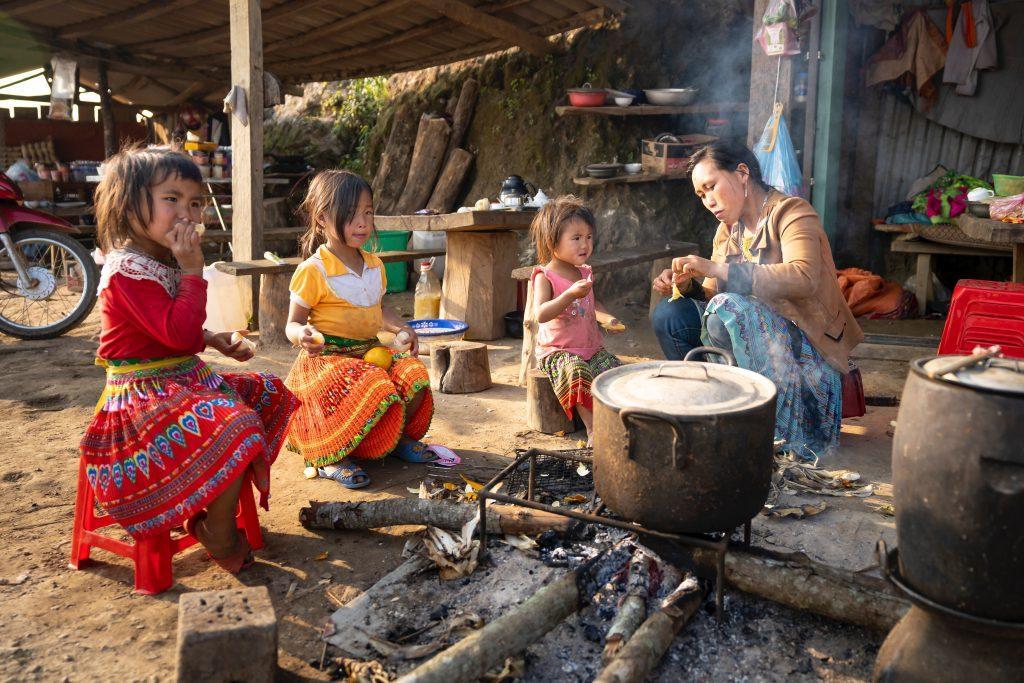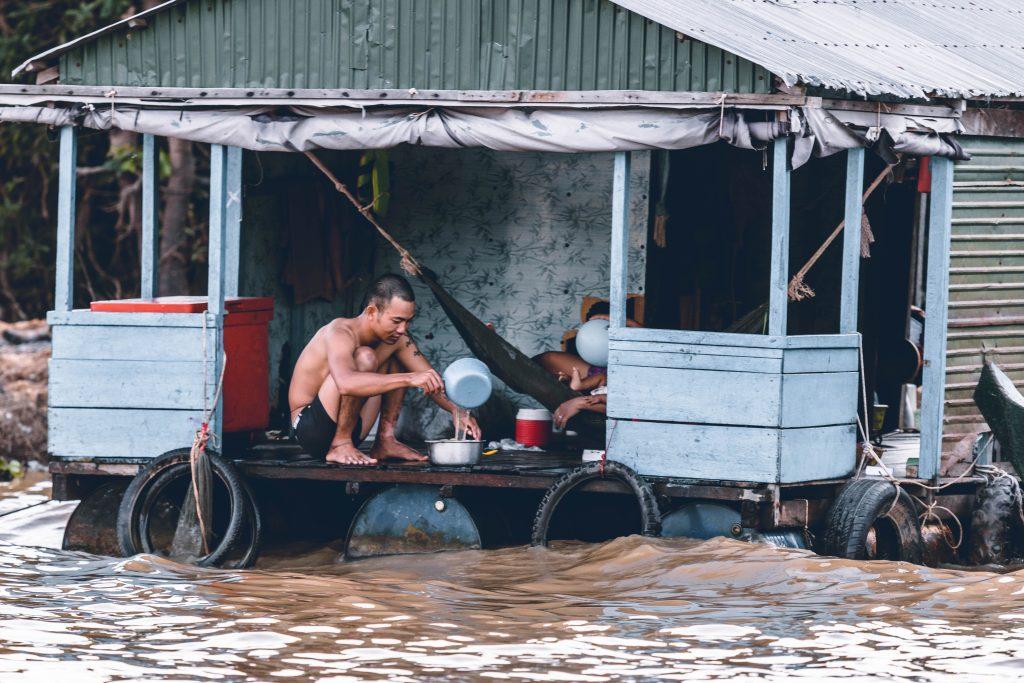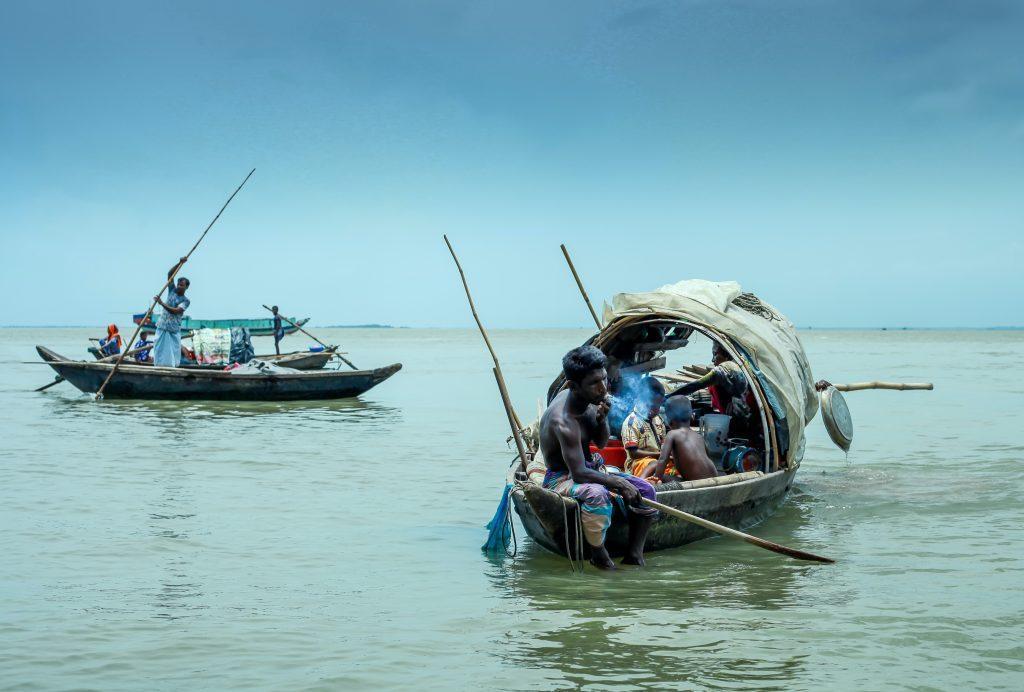Hunger, poverty, and climate change seem like separate concepts. However, the truth is that climate change disproportionately affects people living in poverty. It exacerbates food insecurity and increases inequality. According to the 2021 Intergovernmental Panel Climate Change report, changes in the climate are taking place in every part of the world. Climate change refers to the changes in weather patterns and temperatures over an extended period. At the start of the 19th century, human activity became the major driver of climate change. This includes burning fossil fuels such as oil, coal, and gas. Burning fossil fuels emits greenhouse gases such as carbon dioxide and methane. Clearing forests and land for agriculture also releases carbon dioxide into the atmosphere. These gases cause a rise in global temperatures and a change in weather patterns. Currently, the Earth’s temperatures are about 1.5°C warmer than in the 1800s.
What are the biggest impacts of climate change?
Climate change has adverse effects on food security, poverty, the environment, and water. Some of the consequences of climate change include: flooding, water scarcity, wildfires, rising sea levels, intense frequent droughts, and biodiversity loss. Climate change causes extreme weather events which are harmful to agriculture. A warmer climate impacts crops by making them susceptible to drought and flooding. Frequent heavy rains cause floods that destroy crops and thus reduces yields. This increases poverty, decreases food security, and increases inequality.
Climate change has also caused a decrease in available water. Natural factors such as rain, droughts, fog, and weather patterns have changed. For instance, the rise in temperature has causedglaciers to melt faster than before. Climate change can very well be the main cause of the loss of biodiversity. Hence, impacting humans and the wildlife who depend on them
Why is world hunger an environmental issue?
So, what does climate change have to do with hunger and poverty? Climate change contributes to poverty through the changes in weather. It also causes the collapse of agriculture and foreign trade, ecological disruptions such as rising sea levels, desertification, flooding and sand storms. Low agricultural production, environmental degradation, climate change, and market failures lead to a hunger and poverty crisis. Weather extremities reduce crop yields and affect economies. Unpredictable such as high rains and flooding leads to toxic moulds that affect stored food. Thus, crop harvests stored in humid conditions are vulnerable to infections and pests. Other causes of poverty and hunger are environmental and political conflicts and criminal activities.

Hunger is the lack of access to food or having inadequate quantities of food needed for survival. Keep in mind that this is different from malnutrition which is a lack of proper nutritious food. Lack of food is not a major global problem but is more common in low-income nations. Hunger is also associated with periods of poverty when people have fewer resources to get basic needs. Sometimes a loss of income occurs due to job losses or business closures.
This begs the question – how are climate change and hunger linked? Increased global warming leads to adverse weather conditions affecting agriculture production. Weather extremes such as droughts and floods become more prevalent. The low yields due to these weather extremes lead to hunger as there is less food available. This increases malnutrition further increasing the burden on low-income countries. For example, an estimated 9.2 million children are underweight in Nigeria. Out of these underweight children, about 3 million had severe acute malnourishment (SAM). Because of this, the prevalence of stunting among children under five was 37 per cent.
Who is climate change affecting the most?
Climate change is likely to affect vulnerable communities the most. Unfortunately, they do not have the appropriate resources and skills to adapt and find solutions. Some populations are more vulnerable than others to the effects of climate change. People living on small islands, low-income states, and other coastal regions are vulnerable. Children living in poor countries are more vulnerable to health risks. Climate change and hunger may expose these children to even greater health risks. The health effects are expected to be more severe for the elderly and people with existing medical conditions.
How is climate change affecting poor countries?

By 2050, an additional 183 million of the world’s population is predicted to be food insecure. Climate impacts will also cause more people to flee their homes to look for work elsewhere. Thus, the number of climate refugees will increase. Climate change will also decrease the productivity of the agricultural sector – one of the main sources of income for the poor. This will further contribute to the number of people who are unable to feed themselves. Because of their low coping capacity, climate change will mostly affect low and middle-income countries. These countries also have limited resources to tackle the impacts of climate change.
7 Ways Climate Change Affects World Hunger and Poverty
1. Climate change promotes inequality.
The impact of climate change will be higher in the developing world. Poor countries are least able to adapt to the effects of climate change due to limited resources. Climate change also hits women hardest. This is because they are the ones who tend to small farms. Besides they have fewer alternative livelihoods when there are low crop yields.
2. Increase in food prices.
Extreme events can block main roads, railway tracks, and harbors. This prevents food from reaching markets. Heavy rains and flooding can wipe out harvests and cause food price spikes. Most maize and other coarse grains consumed in sub–Saharan Africa come from the region itself. This means that weather extremes such as drought and floods are likely to have dramatic impacts on production, prices, and, ultimately, consumption.
3. Climate change causes loss of livelihoods.
Heavy rains and droughts have led to harvest losses. In 2019, about 45 million people in Southern Africa did not have enough to eat because of the dry season. Without climate adaptation strategies suited to various contexts, communities face a difficult choice: to migrate in search of other livelihood opportunities or to stay and face hunger.
4. Food security and nutrition.
Climate change has serious implications for food security, nutrition, and health. Poor health reduces the capacity to produce enough food quantities. With low production, people have no choice other than to cut down on the amount of food they eat. Reducing the amount and variety of food consumed can lead to malnutrition.
5. Climate change affects water resources.
The intensity and frequency of droughts reduces water availability. This means that people have to travel long distances in search of water.
6. Climate change increases food waste.
The more extreme climate events become, the more food we lose on an annual basis. Food losses between the farm and the market in low and mid-income countries are very high. In high-income countries, the same amount is wasted between the market and table. These food losses increase the climate crisis as they increase the green house gases emitted from decomposition.
7. Crop diseases.
Climate change alters the geographic range and the number of crop diseases. Crops are less resistant to pests and disease during heat and water stress. The increase in crop disease causes low yields.

What Can We Do About Climate Change and Poverty?
Climate change threatens to bring about three global catastrophes: war, mass migration, and conflict over resources such as food. It is important that we work together to mitigate the effects of climate change. There are several adaptation strategies that reduce the impact of climate change. Some of which we can make in our daily lives.
Many policies and individual choices have the potential to reduce greenhouse gas emissions. Promoting the safe use of public transportation and active movement, such as cycling or walking, can reduce carbon emissions and decrease air pollution. To help lower food prices, there needs to be an effort to improve agricultural production. The use of sustainable agricultural practices will increase productivity and regulate water quality. Sustainable management practices include manure management and adopting improved feeding practices for animals. The use of such practices will reduce some of the world’s chronic hunger problems and mitigate against climate change. To tackle climate change effectively, governments need to heavily invest in climate action.
At THRIVE, we advance sustainability and offer solutions to help heal our environment – our home.